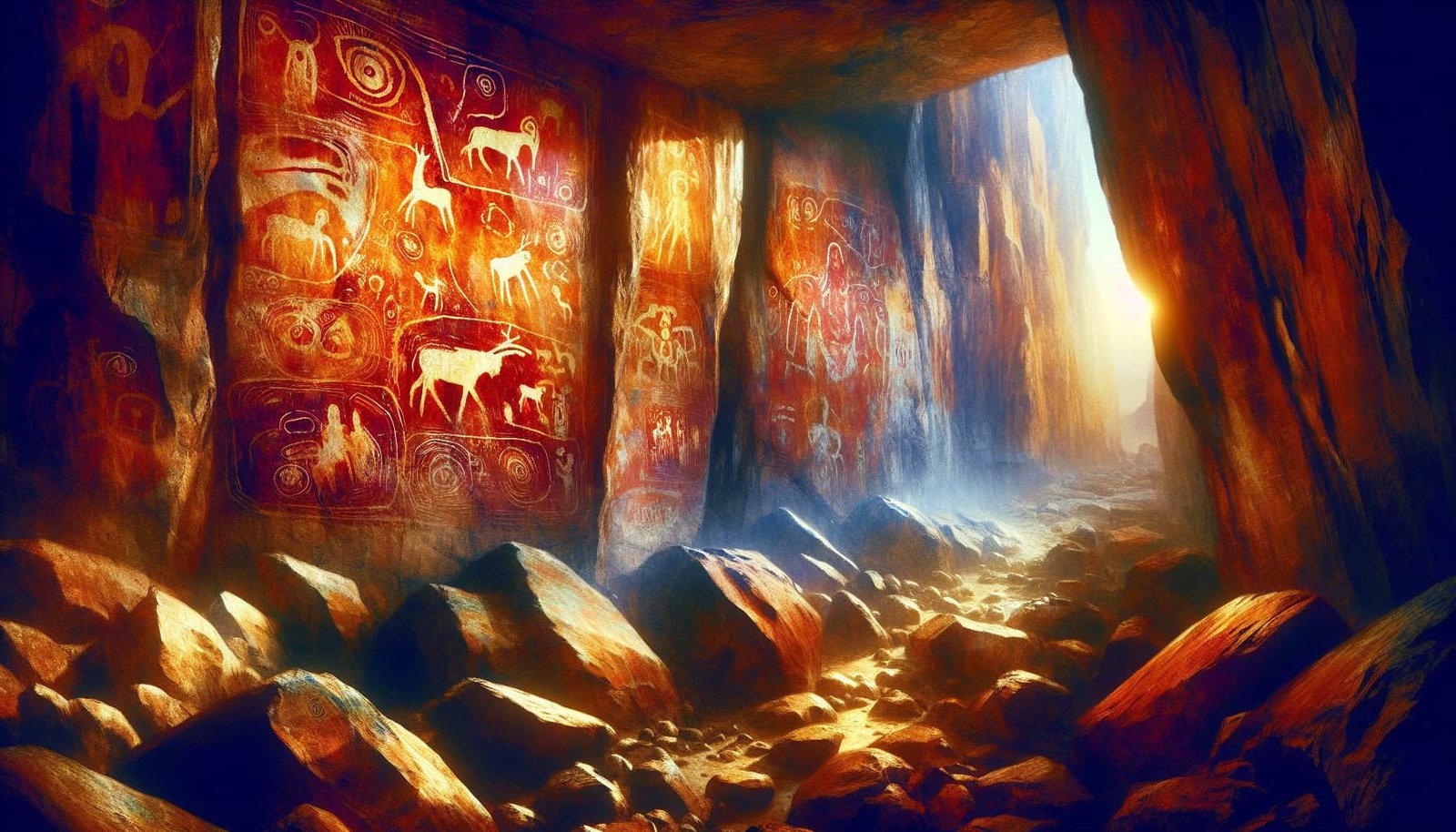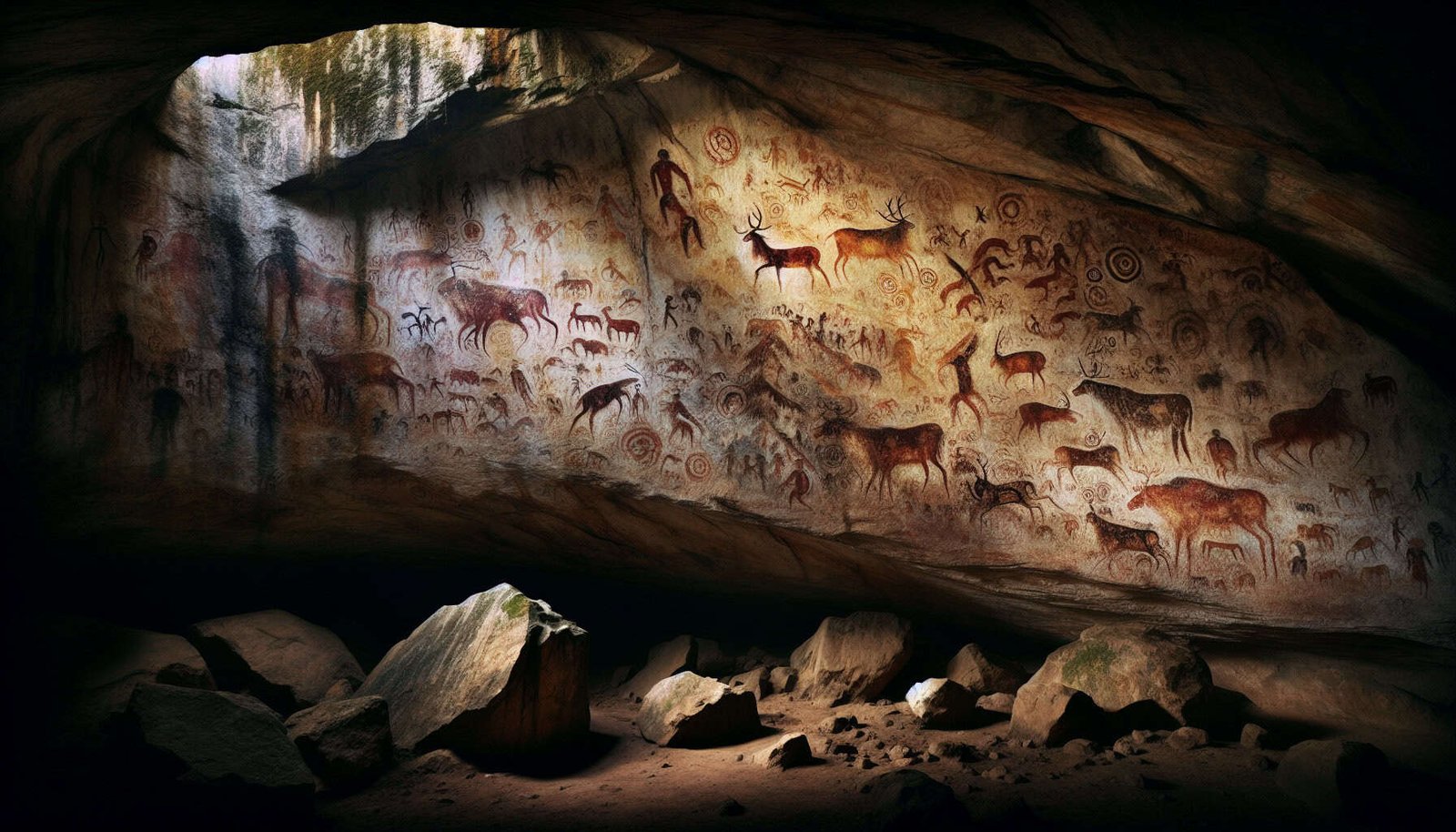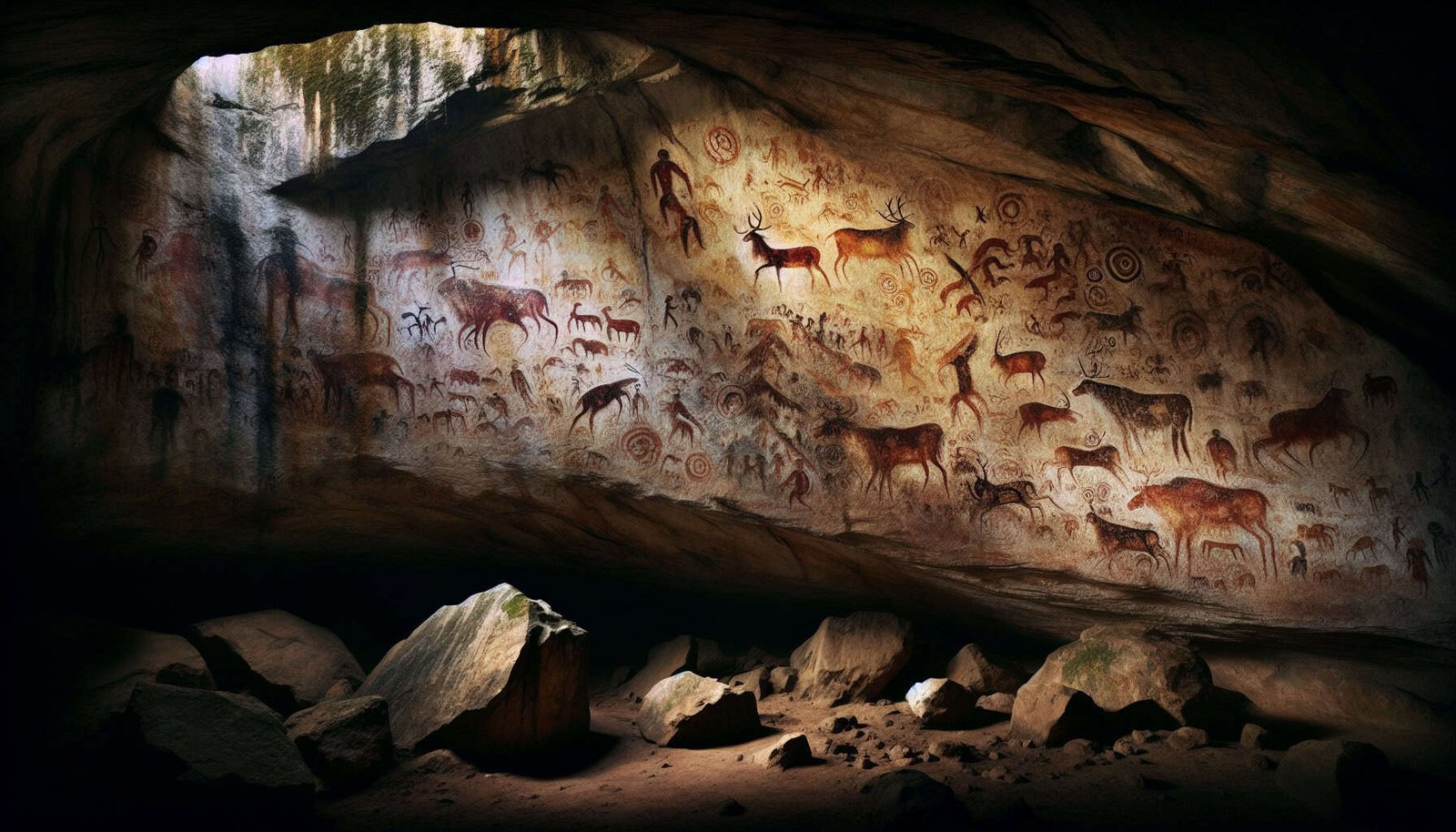Imagine embarking on a thrilling adventure, venturing into the depths of the Earth to uncover the secrets left behind by our ancient ancestors. Picture yourself standing before awe-inspiring cave paintings, marveling at the intricacy and beauty that has withstood the test of time. Or perhaps you find yourself in front of ancient petroglyphs, etched onto rocky landscapes, telling stories of the past. Whether you have a deep fascination for history or simply seek a unique experience, the hunt for hidden cave paintings and ancient petroglyphs will take you on a captivating journey unlike any other.
Africa
1. Algeria
With its rich history and diverse landscape, Algeria is a fascinating destination for anyone seeking to experience hidden cave paintings and ancient petroglyphs. The country boasts several archaeological sites that showcase rock art dating back thousands of years. Tassili n’Ajjer National Park, a UNESCO World Heritage Site, is renowned for its stunning rock formations and ancient cave paintings. The rock art found here provides a glimpse into the lives of the early inhabitants of the Sahara desert and is a testament to their artistic abilities. Exploring Algeria’s cave paintings offers a unique opportunity to immerse yourself in the ancient history of the region.
2. South Africa
South Africa, known for its diverse wildlife and stunning landscapes, is also home to remarkable cave paintings and petroglyphs. The Drakensberg Mountains, a UNESCO World Heritage Site, house one of the largest collections of rock art in Southern Africa. These paintings, created by the San people, offer insights into their way of life, spiritual beliefs, and interactions with the environment. Exploring the Drakensberg’s cave paintings is a truly awe-inspiring experience that allows you to connect with the rich cultural heritage of South Africa.
3. Namibia
Namibia, an enchanting country in southwestern Africa, is another destination where you can discover hidden cave paintings and petroglyphs. Twyfelfontein, a UNESCO World Heritage Site, is home to one of Africa’s largest concentrations of rock engravings. These engravings, created by the indigenous San people, showcase their traditional hunting techniques, wildlife encounters, and cultural practices. Visiting Twyfelfontein offers a glimpse into the ancient traditions and spiritual beliefs of Namibia’s first inhabitants, making it a must-visit destination for history enthusiasts.
Asia
1. Indonesia
Indonesia is not only known for its stunning beaches and vibrant culture but also for its ancient cave paintings and petroglyphs. The island of Sulawesi is particularly famous for its age-old rock art, with cave paintings dating back thousands of years. The Maros-Pangkep karst landscape, a UNESCO World Heritage Site, is a treasure trove of prehistoric artwork. These paintings provide valuable insights into the lives of early humans in the region, depicting scenes of hunting, dancing, and various animals. Exploring Indonesia’s cave paintings allows you to delve into the rich cultural heritage of the archipelago.
2. India
India, a land of enchanting history and diverse traditions, is home to numerous sites where you can experience hidden cave paintings and petroglyphs. The Bhimbetka rock shelters, located in central India, have been recognized as a UNESCO World Heritage Site for their exceptional collection of prehistoric paintings. These paintings, created by early humans thousands of years ago, depict daily life activities, rituals, and various wildlife scenes. Exploring Bhimbetka offers a fascinating journey through time, unveiling the ancient artistry of India’s earliest inhabitants.
3. China
China, renowned for its ancient civilization and breathtaking natural beauty, is also a destination where you can marvel at hidden cave paintings and petroglyphs. Dunhuang, located in the Gobi Desert, is home to the Mogao Caves, a UNESCO World Heritage Site. The caves house a magnificent collection of Buddhist art, including intricate murals, vivid paintings, and vibrant sculptures. These artistic masterpieces provide a window into China’s rich cultural and religious heritage, offering a unique opportunity to witness the blending of art and spirituality.

Europe
1. France
France, a country steeped in history and culture, is a treasure trove for those seeking to experience hidden cave paintings and ancient petroglyphs. The Lascaux Cave, located in the Dordogne region, is renowned for its prehistoric cave paintings, often referred to as the “Sistine Chapel of Prehistoric Art.” Although the original cave is closed to the public to preserve the delicate artwork, a replica known as Lascaux II allows visitors to admire the stunning paintings that date back over 17,000 years. Exploring the Lascaux Cave and its replica is a truly remarkable journey into the artistic achievements of our ancient ancestors.
2. Spain
Spain, with its vibrant culture and rich history, is home to some of the most extraordinary cave paintings and petroglyphs in the world. The Cave of Altamira, located in northern Spain, is renowned for its remarkably well-preserved Paleolithic paintings. These awe-inspiring artworks, depicting bison, horses, and other animals, offer a window into the lives of our ancestors over 35,000 years ago. While the original cave is closed to the public to protect the fragile art, a museum nearby showcases an exact replica, allowing visitors to immerse themselves in the beauty and mystery of Altamira.
3. Italy
Italy, a country renowned for its ancient ruins and artistic heritage, also boasts a wealth of cave paintings and petroglyphs waiting to be discovered. The Valcamonica Rock Art Site, a UNESCO World Heritage Site located in the Lombardy region, houses over 140,000 engraved rocks with more than 200,000 figures. These engravings, dating back to the Iron Age and depicting a wide range of human and animal figures, hold immense historical and cultural significance. Exploring the rock art in Valcamonica enables you to witness the artistic achievements of Italy’s early inhabitants and gain a deeper understanding of their ancient society.
North America
1. United States (Southwestern states)
The southwestern states of the United States offer a remarkable opportunity to experience hidden cave paintings and ancient petroglyphs. Hovenweep National Monument, spanning the borders of Utah and Colorado, showcases ancient Puebloan rock art, including petroglyphs and pictographs. These intricate designs, etched onto sandstone cliffs, tell stories of the Ancestral Puebloans’ daily lives, rituals, and connection to the natural world. Exploring the ancient rock art in the southwestern states is an immersive journey into the history and culture of the Native American tribes that once thrived in the region.
2. Mexico
Mexico, a country steeped in ancient history and indigenous cultures, boasts numerous sites where hidden cave paintings and petroglyphs can be discovered. The Cueva de las Manos (Cave of Hands), located in the Sierra de San Francisco, is a UNESCO World Heritage Site renowned for its impressive collection of cave paintings. These paintings, created by the indigenous peoples of the Baja California Peninsula, depict handprints, animals, and geometric designs. Exploring the Cave of Hands allows you to connect with Mexico’s rich cultural heritage and gain insight into the artistic traditions of its early inhabitants.
3. Canada (British Columbia)
British Columbia, a province known for its breathtaking natural landscapes, also offers opportunities to explore hidden cave paintings and petroglyphs. The Gwaii Haanas National Park Reserve and Haida Heritage Site, located on Haida Gwaii (Queen Charlotte Islands), is home to ancient Haida village sites adorned with beautifully carved totem poles. These totem poles, each telling a unique story, represent the artistic achievements and cultural traditions of the Haida people. Visiting the Gwaii Haanas National Park Reserve allows you to immerse yourself in the rich heritage of the Haida Nation, experiencing their art and connecting with the natural world.

South America
1. Colombia
Colombia, a country known for its vibrant culture and stunning landscapes, is also home to remarkable cave paintings and petroglyphs. The Chiribiquete National Park, a UNESCO World Heritage Site, is famous for its remote canyons adorned with ancient rock art. These paintings, created by indigenous communities that have inhabited the region for thousands of years, depict scenes of daily life, social relationships, and spiritual beliefs. Exploring the cave paintings in Chiribiquete offers a unique opportunity to witness the rich cultural legacy of Colombia’s indigenous peoples.
2. Chile
Chile, a land of diverse ecosystems and natural wonders, also boasts captivating cave paintings and petroglyphs. The El Encanto Cave, located in Northern Chile, features rock art dating back thousands of years. These paintings, created by the indigenous peoples, showcase their intimate connection with the environment and their spiritual beliefs. Exploring the El Encanto Cave offers a window into Chile’s ancient history and provides a deeper understanding of the indigenous cultures that have shaped the region.
3. Brazil
Brazil, known for its vibrant cities and majestic natural landscapes, is also a destination where you can experience hidden cave paintings and petroglyphs. The Serra da Capivara National Park, a UNESCO World Heritage Site, is renowned for its extensive collection of rock art created by the early human inhabitants of the region. These paintings, scattered throughout the park’s rugged canyons, depict scenes of hunting, dancing, and various wildlife. Visiting the Serra da Capivara National Park allows you to immerse yourself in Brazil’s ancient past and witness the artistic achievements of its earliest inhabitants.
Oceania
1. Australia
Australia, a land of ancient indigenous cultures and breathtaking landscapes, provides opportunities to explore hidden cave paintings and petroglyphs. The Kakadu National Park, a UNESCO World Heritage Site in the Northern Territory, houses a significant collection of rock art created by Aboriginal people. These paintings, dating back thousands of years, depict dreamtime stories, cultural traditions, and the unique flora and fauna of the region. Exploring the rock art in Kakadu National Park offers a deep appreciation for Australia’s rich indigenous heritage and a connection to the land that spans millennia.
2. Papua New Guinea
Papua New Guinea, a country renowned for its diverse tribal cultures and pristine wilderness, is also home to captivating cave paintings and petroglyphs. The Kavieng Region, situated on the island of New Ireland, features caves adorned with rock art created by the indigenous peoples. These paintings, depicting ancestral spirits, mythical creatures, and important cultural events, provide a glimpse into the spiritual beliefs and traditions of Papua New Guinea’s indigenous communities. Exploring the cave paintings in the Kavieng Region offers a unique opportunity to witness the rich cultural heritage of this fascinating country.
3. New Zealand
New Zealand, a country of stunning landscapes and Maori traditions, also offers the chance to discover hidden cave paintings and ancient petroglyphs. The South Island’s Nelson Lakes National Park is home to impressive rock art created by the indigenous Maori people. These carvings, known as rock drawings or “pouwhenua,” depict ancestral stories, tribal symbols, and the natural world. Exploring the rock art in Nelson Lakes National Park immerses you in the rich traditions and deep spiritual connection that the Maori people have with their land.

Getting Started
1. Research the Locations
Before embarking on your journey to experience hidden cave paintings and ancient petroglyphs, it is essential to conduct thorough research on the locations you plan to visit. Learn about the specific sites, their historical and cultural significance, and any regulations or guidelines in place for visitors. This research will help you better appreciate and understand the art you encounter during your trip.
2. Learn about the Cave Paintings and Petroglyphs
To fully appreciate the cave paintings and petroglyphs you will encounter, take the time to learn about the art forms themselves. Understand the techniques used, the meanings behind the symbols and figures depicted, and the cultural contexts in which they were created. By immersing yourself in the knowledge surrounding these ancient artworks, you can develop a deeper appreciation and understanding of their significance.
3. Plan Your Trip
Once you have conducted your research and gained an understanding of the cave paintings and petroglyphs you wish to explore, it’s time to plan your trip. Consider factors such as transportation, accommodations, and the duration of your visit. Take into account the best time to visit each location, considering weather conditions and any seasonal factors that may impact your experience. Develop a well-thought-out itinerary that allows you to make the most of your time while respecting the natural and cultural environments you will be visiting.
Preparing for your Visit
1. Gather Necessary Equipment
When preparing for your visit to explore hidden cave paintings and ancient petroglyphs, it is important to gather the necessary equipment. This may include comfortable walking shoes, a hat, sun protection, and insect repellent. Additionally, consider bringing a camera or sketchbook to capture your experience, as long as flash photography is not prohibited.
2. Dress Appropriately
To ensure a comfortable and respectful visit, dress appropriately for the environment you will be exploring. This may involve wearing lightweight, breathable clothing in hot climates or warm layers in colder regions. Consider the potential for rough terrain and pack sturdy footwear that will support your feet throughout your explorations.
3. Bring Water and Snacks
Exploring hidden cave paintings and ancient petroglyphs often involves spending extended periods of time in remote locations. It is essential to bring an ample supply of water and nutritious snacks to stay hydrated and energized during your visit. Avoid leaving behind any waste and be mindful of any regulations regarding food and drink in protected areas.

Visiting the Sites
1. Follow Regulations and Guidelines
When visiting sites with hidden cave paintings and ancient petroglyphs, it is crucial to respect any regulations and guidelines put in place to protect these precious cultural treasures. Follow designated trails, stay on designated paths, and avoid touching, climbing, or damaging the artwork or its surroundings. By being a responsible visitor, you contribute to the preservation of these invaluable historical sites.
2. Hire a Guide or Join a Tour
To enhance your experience and gain deeper insights into the cave paintings and petroglyphs you are visiting, consider hiring a knowledgeable guide or joining a guided tour. Guides can provide comprehensive explanations, interpret the meanings behind the artwork, and share fascinating stories and cultural contexts. Their expertise helps ensure a more meaningful and educational visit.
3. Respect the Artwork and Environment
As you explore hidden cave paintings and ancient petroglyphs, it is essential to show respect for both the artwork and the natural environment. Avoid touching the paintings or petroglyphs, as the oils and debris on your hands can cause damage. Be mindful of your surroundings and refrain from littering or leaving any traces of your visit. By respecting the art and the environment, you help preserve these cultural treasures for future generations to enjoy.
Preserving Cave Paintings and Petroglyphs
1. Do Not Touch or Disturb the Artwork
One of the most critical steps in preserving cave paintings and petroglyphs is to refrain from touching or disturbing the artwork in any way. The oils, dirt, and moisture on our hands can have a detrimental impact on these delicate ancient creations. By keeping a respectful distance and not touching the art, we can help ensure its preservation for years to come.
2. Avoid Flash Photography
Flash photography can contribute to the degradation of cave paintings and petroglyphs over time. The intense light emitted by camera flashes can cause fading and damage to the artwork’s pigments and delicate surfaces. It is best to avoid using flash photography altogether or check for specific guidelines at each location to ensure responsible photography practices.
3. Report any Vandalism or Damage
If you notice any vandalism or damage to cave paintings and petroglyphs during your visit, it is crucial to report it immediately to the appropriate authorities. By taking an active role in preserving these artworks, you contribute to their continued protection and raised awareness of the importance of respecting and safeguarding cultural heritage.
In conclusion, exploring hidden cave paintings and ancient petroglyphs is a fascinating journey into the cultural and artistic heritage of various regions around the world. From the remote canyons in Algeria to the rock shelters in South Africa, the ancient artworks offer insights into the lives and beliefs of our ancestors. By conducting thorough research, planning your trip, and respecting the regulations and guidelines in place, you can have a meaningful experience while ensuring the preservation of these invaluable cultural treasures for future generations to appreciate and explore.

